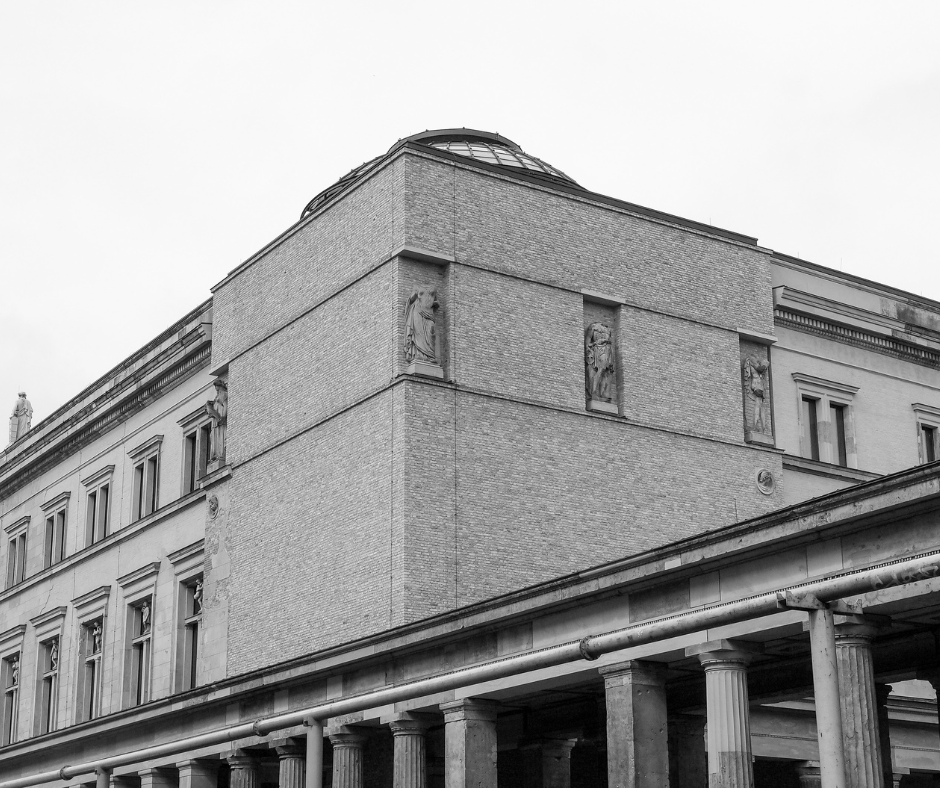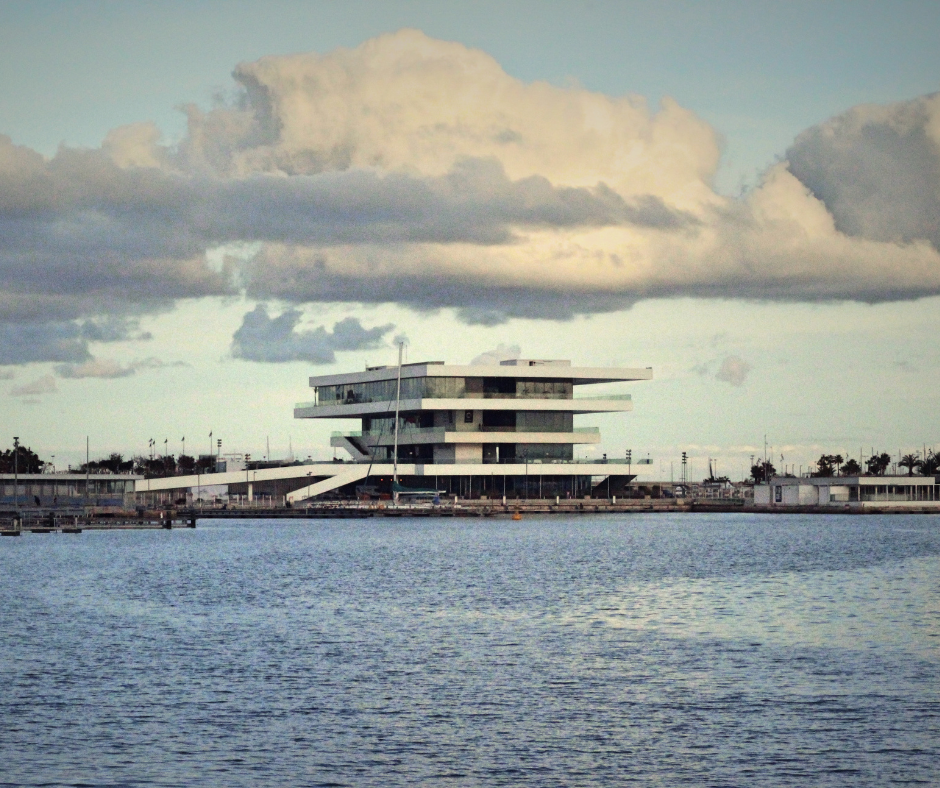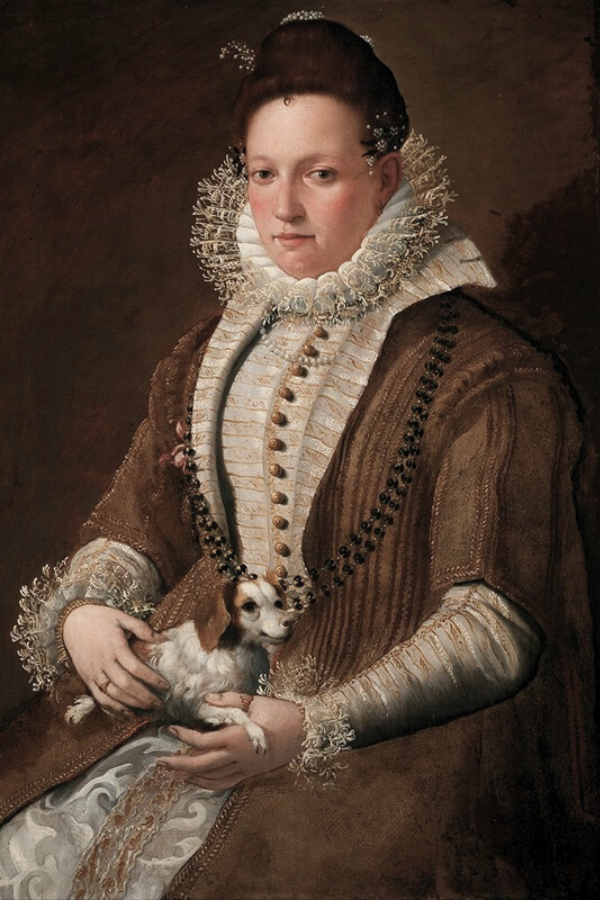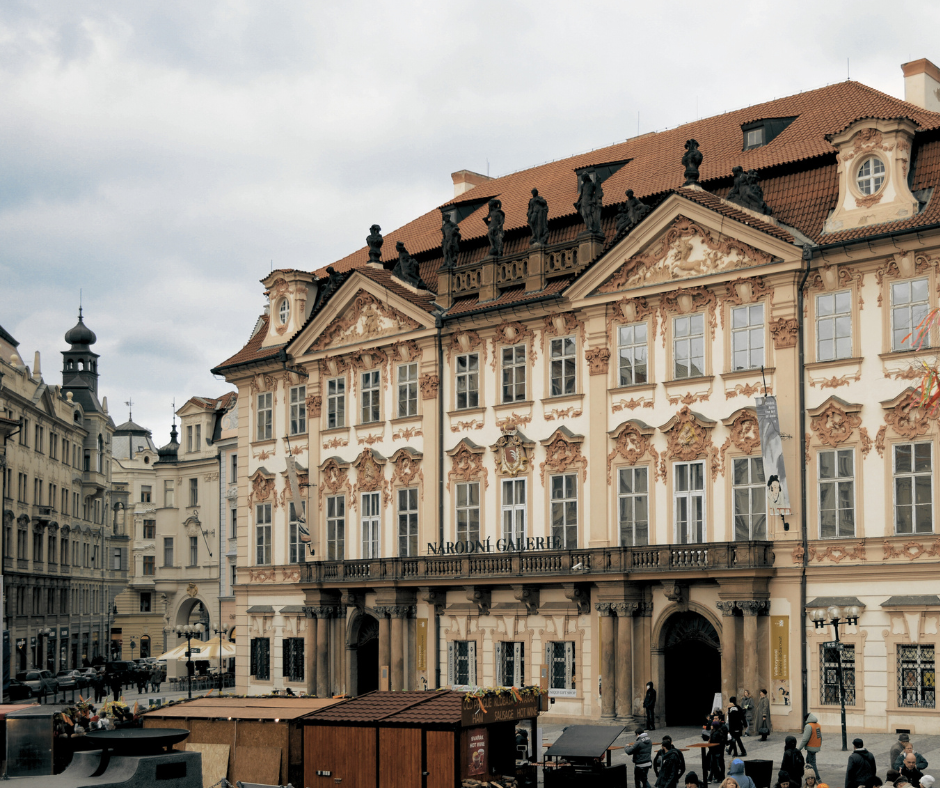
2023 Pritzker Prize Winner: Honoring Sir David Chipperfield and His Work
Summary
Reflection Questions
Journal Prompt
2023 Pritzker Prize winner David Chipperfield is renowned for his purist and materially rich designs that have garnered international acclaim. As the principal of David Chipperfield Architects, founded in 1985, his practice has been lauded with numerous prestigious awards, including the RIBA Royal Gold Medal and the Heinrich Tessenow Gold Medal, solidifying his reputation in the field. This article aims to dissect the layers of Chipperfield’s influence, examining how his steadfast commitment to architectural excellence and contextual sensitivity has indelibly shaped the fabric of modern architecture. Through an analysis of his work, we seek to understand the nuances of his design philosophy and the profound impact it has had on the built environment and the broader discourse of architectural design.
Early Life and Education
David Chipperfield was born on 18 December 1953 in London, England. Growing up in a post-war Britain that was undergoing significant architectural and cultural transformation, Chipperfield was exposed to a changing landscape that would later inform his design ethos. From an early age, he demonstrated a proclivity for the arts, a path that was gently nurtured by his family’s support of his creative pursuits.
Educational Journey and Formative Experiences
Chipperfield’s formal education in architecture began at the Kingston School of Art in Kingston upon Thames, where he laid the foundational knowledge of his craft. He then continued his studies at the Architectural Association in London, a prestigious institution known for its avant-garde approach and intellectual rigor.
His time there was characterized by a rigorous exploration of architectural theory and practice, culminating in a diploma in architecture. The educational environment of the Architectural Association, with its diverse international community and challenging curriculum, was instrumental in shaping his architectural perspective.
Influential Figures and Moments in His Early Career
The trajectory of Chipperfield’s early career was significantly influenced by the architects he encountered and worked with. After graduating, he found mentorship and professional experience at the offices of Douglas Stephen, Norman Foster, and Richard Rogers, who were leading figures in the architectural scene.
Each of these stints provided him with a unique insight into the operations of successful architectural practices and exposed him to high-profile projects. Notably, his work on the design of the Pompidou Centre with Richard Rogers offered him an intimate view of groundbreaking architectural innovation. These experiences laid the groundwork for his understanding of both the practicalities of architectural production and the creative potential inherent in the discipline.
Formation of David Chipperfield Architects

Sir David Alan Chipperfield established David Chipperfield Architects in 1985, in London, following his significant exposure to the workings of some of the most innovative architectural practices of the time. The firm was founded on the philosophy of delivering projects that are intellectually rigorous and that resonate with their specific context.
Chipperfield sought to create a practice that prioritized the synthesis of design integrity and functional simplicity, rejecting ephemeral trends in favor of timeless architecture.
Key Principles and Design Aesthetics
The key principles guiding David Chipperfield Architects stem from a commitment to enduring quality and a deep respect for craftsmanship. Chipperfield’s approach is characterized by a minimalistic aesthetic that places a high value on proportion, light, and materiality.
His designs often exhibit a restrained palette, where the tactile qualities of materials are allowed to speak for themselves, and where the relationship between the built form and its environment is carefully considered and articulated. This aesthetic principle is not just a superficial layer but is intrinsically linked to the functionality and cultural significance of each project.
Expansion and International Presence

The reputation of David Chipperfield Architects grew swiftly, necessitating an expansion beyond the UK. The firm established additional offices in Berlin, Milan, and Shanghai, transforming into a global architectural practice with a diverse international team.
This expansion enabled the firm to engage with a wide array of cultures and contexts, which has become a cornerstone of its work. The international presence of the practice has allowed for a broad platform to disseminate its philosophy, engage with different architectural challenges, and apply its design principles to a variety of scales and functions, from civic buildings and museums to residential projects across continents.
Architectural Style and Approach
David Chipperfield’s architectural style is distinguished by its clarity, simplicity, and a profound sense of purpose. His work is often characterized by a monolithic purity, geometry, and an unswerving allegiance to minimalism.
There is an inherent restraint in his designs, avoiding gratuitous embellishments in favor of achieving a harmonious balance between form, space, and light. The result is architecture that achieves a timelessness, avoiding the transient nature of stylistic trends, and focusing instead on the enduring qualities of the built environment.
His Approach to Blending Contemporary Design with Context and Tradition
Chipperfield’s approach to architecture is not conducted in isolation from its surroundings; rather, it is a thoughtful dialogue with both the immediate context and the broader continuum of architectural tradition. His designs are contemporary yet conscious of history, blending modernist principles with a deep understanding and respect for the past.
He achieves this synthesis by considering the cultural, historical, and physical narratives of the site, resulting in buildings that respond to their environment in a way that is both innovative and sensitive. This methodology allows for an architecture that is rooted in its place, contributing to the site’s ongoing narrative rather than imposing a disconnected aesthetic.
Use of Materials and Innovation in His Buildings
The material palette in Chipperfield’s work is meticulously selected and often consists of natural materials that age gracefully and convey a sense of solidity and permanence. The practice has a predilection for stone, concrete, wood, and glass, materials that offer a wealth of textures and subtle variations that add depth and richness to the spaces created.
His innovative use of materials is not just an aesthetic choice but is also reflective of his commitment to sustainability and the longevity of his buildings. The firm is known for employing cutting-edge construction techniques and technologies to enhance the performance and functionality of materials, ensuring that the buildings are not only visually appealing but also environmentally responsible and built to last.
Notable Projects and Buildings

Among the plethora of David Chipperfield’s projects, the River and Rowing Museum in Henley-on-Thames, UK, and the Neues Museum on Berlin’s Museum Island, Germany, stand out for their exemplary realization of his architectural principles. The River and Rowing Museum, completed in 1997, illustrates his ability to integrate a modern structure within a traditionally sensitive English landscape.
On the other hand, the restoration and rebuilding of the Neues Museum, which concluded in 2009, showcases his profound skill in melding historical reverence for existing adjoining buildings with contemporary intervention in new spaces. Beyond these projects, Chipperfield has also designed Turner Contemporary Gallery, the Museum of Modern Literature, and the Des Moines Public Library.
Insight into the Design Process and Challenges of Select Works
The Neues Museum, particularly, highlights Chipperfield’s meticulous design process and the challenges entailed in merging the old with the new. The project demanded a respectful restoration of what remained from the war-damaged structure, while also making clear what was addition.
The complexity of this task was met with an innovative approach that saw new elements blend seamlessly with the old, honoring the museum’s history and its destruction. The subtlety in the use of materials and the careful placement of new structures against the old are testaments to the firm’s collaborative design process and attention to detail.
Impact of These Buildings on Local and Global Architecture
The influence of these buildings extends well beyond their immediate localities. The River and Rowing Museum, with its timber-clad exterior and environmentally responsive design, set a precedent for regional museum architecture, promoting a model that is both ecologically integrated and culturally specific.
The Neues Museum, on the other hand, has become a benchmark in the field of conservation and museum design, recognized globally for its innovative approach to restoration and its philosophical contributions to the discourse on the treatment of historic buildings. Collectively, these projects underscore Chipperfield’s impact on the architectural profession, advancing a narrative that emphasizes the balance between heritage and contemporary design, and advocating for architecture that is both of its time and timeless.
Taking a Closer Look at the Museum of Modern Literature by David Chipperfield Architects
David Chipperfield’s Museum of Modern Literature (Literaturmuseum der Moderne) is located in Marbach am Neckar, Germany, and it opened to the public in 2006. This museum is dedicated to the modern literary archives of the German Literature Archive (Deutsches Literaturarchiv Marbach). It holds a significant collection of manuscripts, letters, and other artifacts pertaining to German literature.
The museum’s design earned Chipperfield the prestigious Stirling Prize in 2007, with the jury commending its “simple and direct” design that appears “effortless and inevitable”. The building’s architectural language is a reflection of Chipperfield’s consistent approach: it is minimalistic, functional, and thoroughly modern while engaging thoughtfully with its context.
The Museum of Modern Literature is perched on a plateau overlooking the valley of the Neckar River, engaging in a silent dialogue with the existing buildings of the German Literature Archive complex. The site is adjacent to the Schiller National Museum and the Archive for Literature, which are held in historical esteem. Chipperfield’s building complements these existing structures through contrast rather than imitation, exhibiting a clear contemporary architectural expression while remaining sympathetic to the scale and materiality of the local rural architecture that neighbors it.
In terms of design, this major project is characterized by its use of fair-faced concrete, glass, and wood. The exterior is notable for its rows of tall windows that offer panoramic views of the scenic valley and the town of Marbach. The building respects the topography of the site, with its entry plaza at the level of the Schillerhöhe park, leading down to the main exhibition spaces which align with the level of the earlier 20th-century archive buildings. This creates a terraced effect that mediates between the natural landscape and the built environment.
Awards and Recognitions
Beyond the Pritzker Prize for Architecture, David Chipperfield has been the recipient of an extensive array of prestigious awards and titles that mark his contributions to the field of architecture. Some of the most notable among these include the RIBA Royal Gold Medal for Architecture, the Mies van der Rohe Award, and the Heinrich Tessenow Gold Medal.
He has also been honored with the Order of Merit of the Federal Republic of Germany and knighted in the United Kingdom for his services to architecture. The recognitions accorded to him enumerate not only his aesthetic and innovative achievements but also his role as a steward of cultural and historical preservation.
Significance of These Awards in the Architectural Community
The awards bestowed upon David Chipperfield are not merely ceremonial; they signify a peer-reviewed acknowledgment of excellence and innovation in architecture. These accolades are conferred by the most reputable institutions in the field, recognizing individuals who have made a substantial and lasting impact on the built environment and who continue to push the boundaries of architectural design.
These awards serve to ratify Chipperfield’s status as a leading figure within the global architectural discourse, further solidifying his influence and the significance of his contributions to the contemporary practice and study of architecture.
Notable Juries and Institutions that Have Recognized His Work
The juries and institutions that have recognized David Chipperfield’s work include some of the most respected entities in the architectural world. The Royal Institute of British Architects (RIBA), the European Union Prize for Contemporary Architecture (Mies van der Rohe Award), and the Fundación Heinrich Tessenow (Heinrich Tessenow Medal) are among those that have awarded his achievements.
These organizations not only acknowledge exemplary architectural output but also promote the advancement of architectural practices. The laurels from such institutions also underscore the universal respect and admiration for Chipperfield’s contributions among his peers and the wider cultural community.
Contribution to Education and the Arts
David Chipperfield has extended his influence beyond the confines of the professional studio to the academic realm, where his insights and philosophies enrich the educational journey of budding architects. He has held professorships and lectured at esteemed institutions worldwide, including the Staatliche Akademie der Bildenden Künste in Stuttgart, the University of the Arts London, and Harvard University’s Graduate School of Design.
His pedagogy often reflects his own approach to architecture: thoughtful, contextually aware, and rigorously intellectual. Through critiques, workshops, and lectures, Chipperfield imparts a philosophy that underscores the social responsibilities of architects and the profound impact of architecture on society, culture, and contemporary art.
Involvement in Art and Architecture Exhibitions
Chipperfield’s active participation in art and architecture exhibitions has facilitated broader discussions on the role of architecture in public life. He has curated significant exhibitions, such as the critically acclaimed 13th International Architecture Exhibition at the Venice Biennale in 2012.
By choosing to focus on the theme “Common Ground,” he encouraged professionals to showcase collaborative works instead of individual glory, emphasizing shared architectural culture over personal stardom. His involvement in these exhibitions exemplifies his commitment to fostering a collective discourse on architecture’s capacity to engage with public narratives and societal issues.
Influence on the Next Generation of Architects
The cumulative impact of David Chipperfield’s extensive work, both in practice and education, has rippled through the field of architecture, influencing successive generations of architects. His advocacy for an ethical practice that respects history, context, and sustainability has resonated with many emerging professionals.
Moreover, his insistence on architecture’s civic role has prompted young architects to consider the broader implications of their work. Through his educational initiatives and public exhibitions, Chipperfield has helped cultivate a generation of architects who are not only skilled designers but also conscientious contributors to the built environment. His ongoing engagement with the future of architecture promises a continuity of these values in the architectural narratives of tomorrow.
David Chipperfield’s Firm Today
David Chipperfield Architects continues to be at the vanguard of contemporary architecture, with a portfolio that spans a diverse range of current projects, including cultural institutions, residential buildings, and civic spaces. The firm’s future direction seems to uphold its commitment to creating architecture that offers a nuanced dialogue between history, place, and purpose.
Embracing both local and global scales, the practice is working on projects such as the expansion of the Kunsthaus Zürich and the development of the new headquarters for the Nobel Prize in Stockholm. This trajectory indicates a sustained endeavor to craft spaces that are enduring and significant within their urban and cultural contexts.
The Firm’s Approach to Sustainability and the Environment
Sustainability is no longer an addendum but a fundamental aspect of contemporary architectural practice, a principle that is deeply integrated into the ethos of David Chipperfield Architects. The firm’s approach to sustainability encompasses not only the technical aspects of building performance and material selection but also a broader conception that includes social and cultural viability.
By advocating for buildings that are designed for longevity, adaptability, and contextual sensitivity, the practice embeds environmental considerations into the core of its design philosophy, aspiring to create buildings that are both environmentally responsible and architecturally significant.
Collaborations and Partnerships in the Industry
Collaboration is a key theme that permeates the work of David Chipperfield Architects, evidenced by its global presence and ability to partner with a wide array of clients, consultants, and other creative disciplines. The firm actively engages with local experts and craftspeople, recognizing that a successful architectural project is the product of collective expertise.
These collaborations extend to industries and sectors beyond traditional architectural boundaries, including art, fashion, and design, fostering a cross-pollination of ideas that enriches the firm’s work. The integrative approach to partnerships reflects a contemporary practice that is dynamic and inclusive, prepared to meet the complex demands of today’s architectural projects.
David Chipperfield, Architect: Final Thoughts

David Chipperfield’s contributions to architecture are marked by a profound respect for materiality, context, and the enduring value of design. His body of work, distinguished by a clear articulation of form and a disciplined approach to modernity, cements his status as an iconic figure in the field.
The enduring qualities of Chipperfield’s architecture—its modernist and traditional forms, its timeless aesthetic, its conscientious integration into varied environments, and its thoughtful engagement with historical narratives—underscore a career that has significantly influenced contemporary architectural practice. As his firm continues to shape the physical and cultural landscapes of cities around the world, a reflection on Chipperfield’s impact invites a deeper appreciation for architecture’s capacity to converse with time and place.
Readers are encouraged to engage directly with Chipperfield’s buildings, to experience firsthand the subtleties of space and light that define his approach, and to contemplate the layers of meaning imbued within his work.








